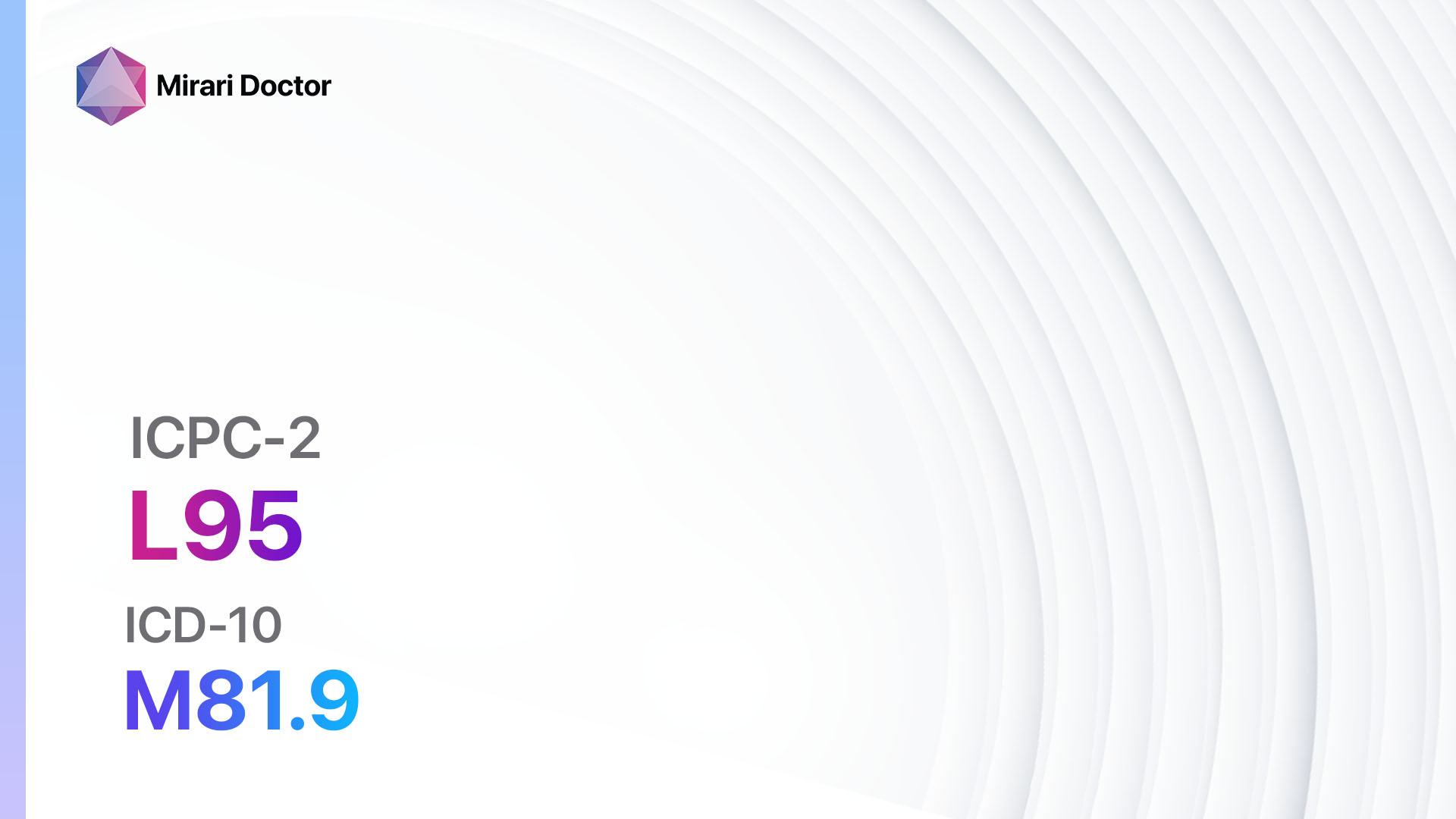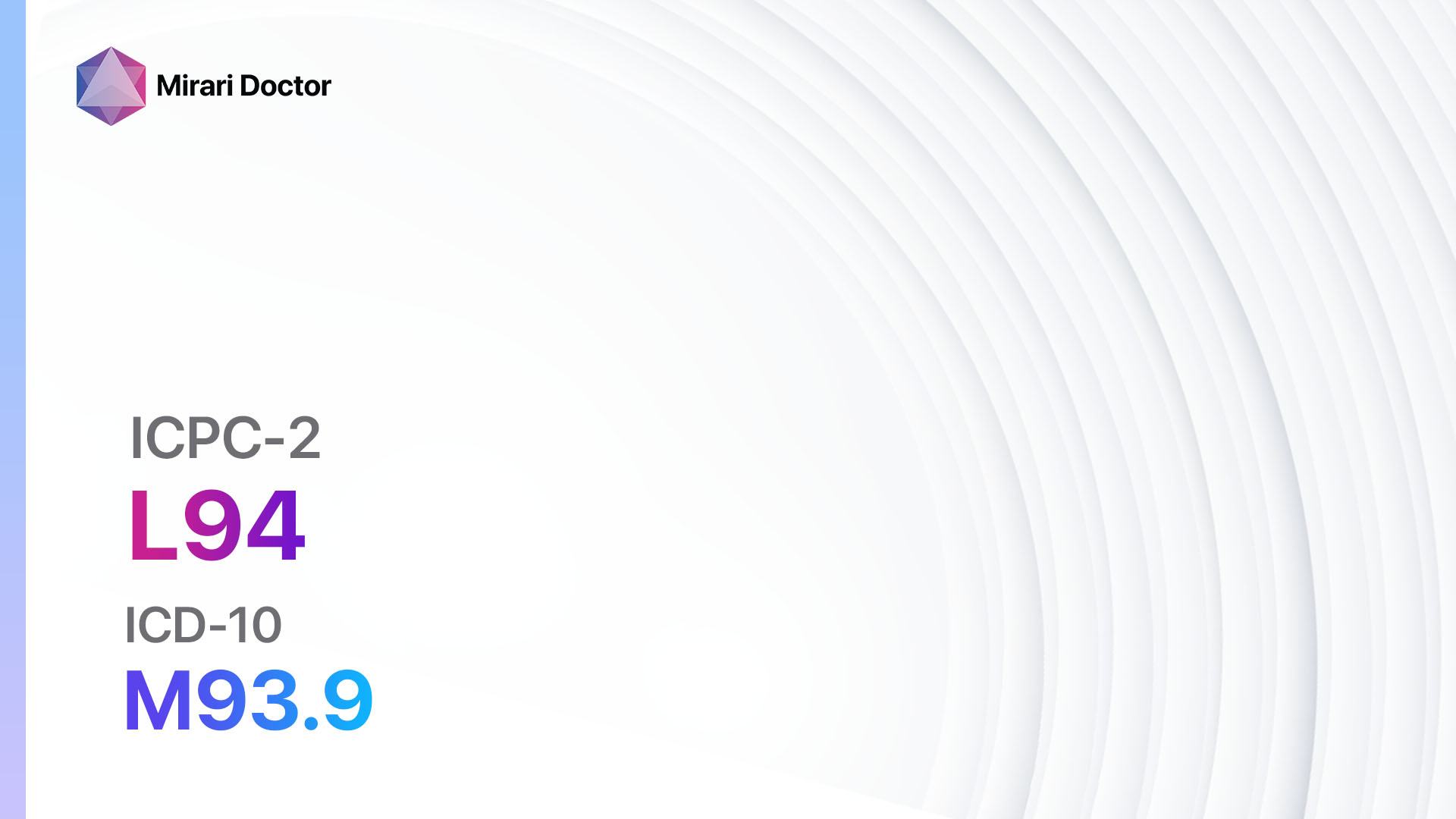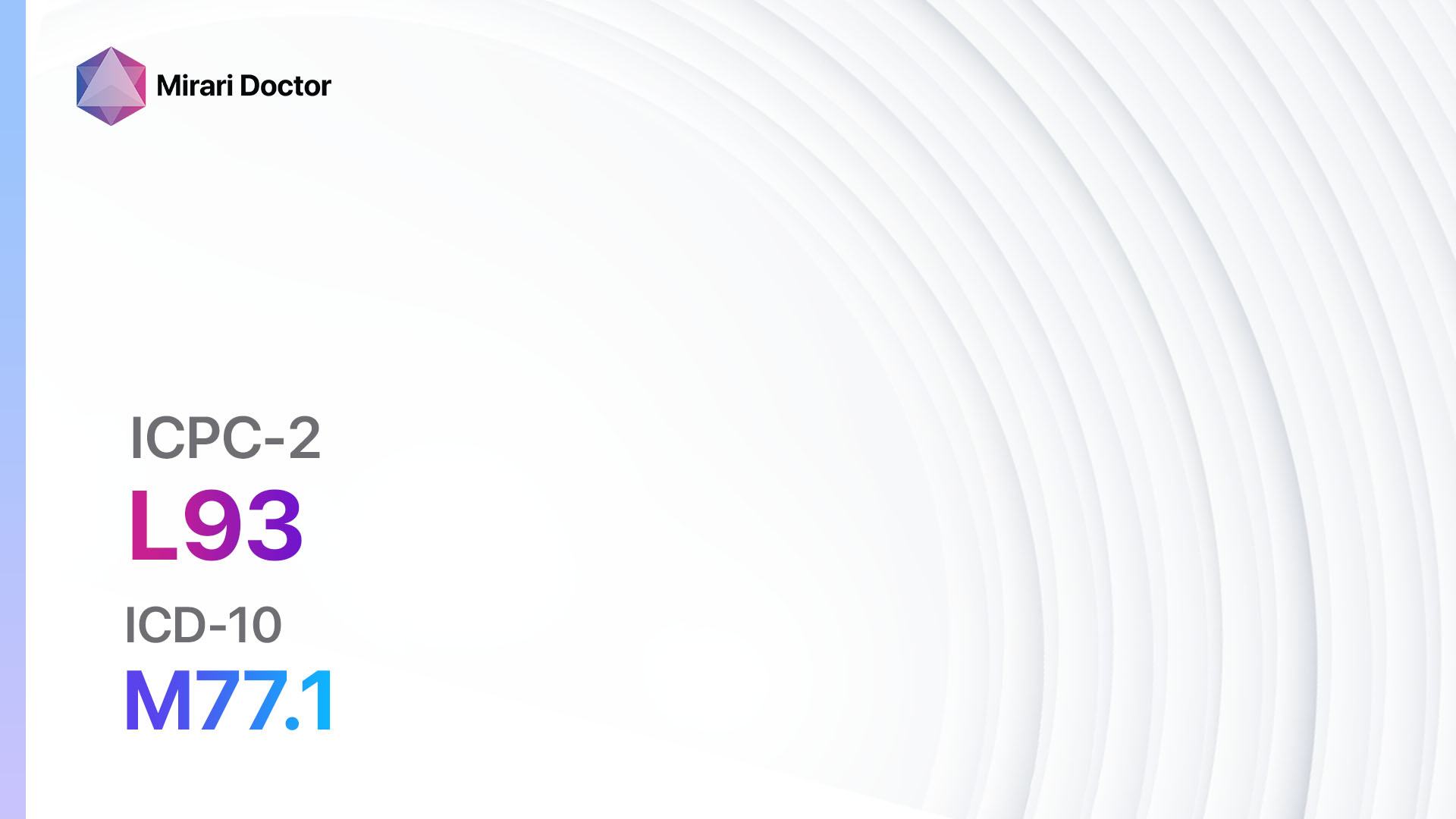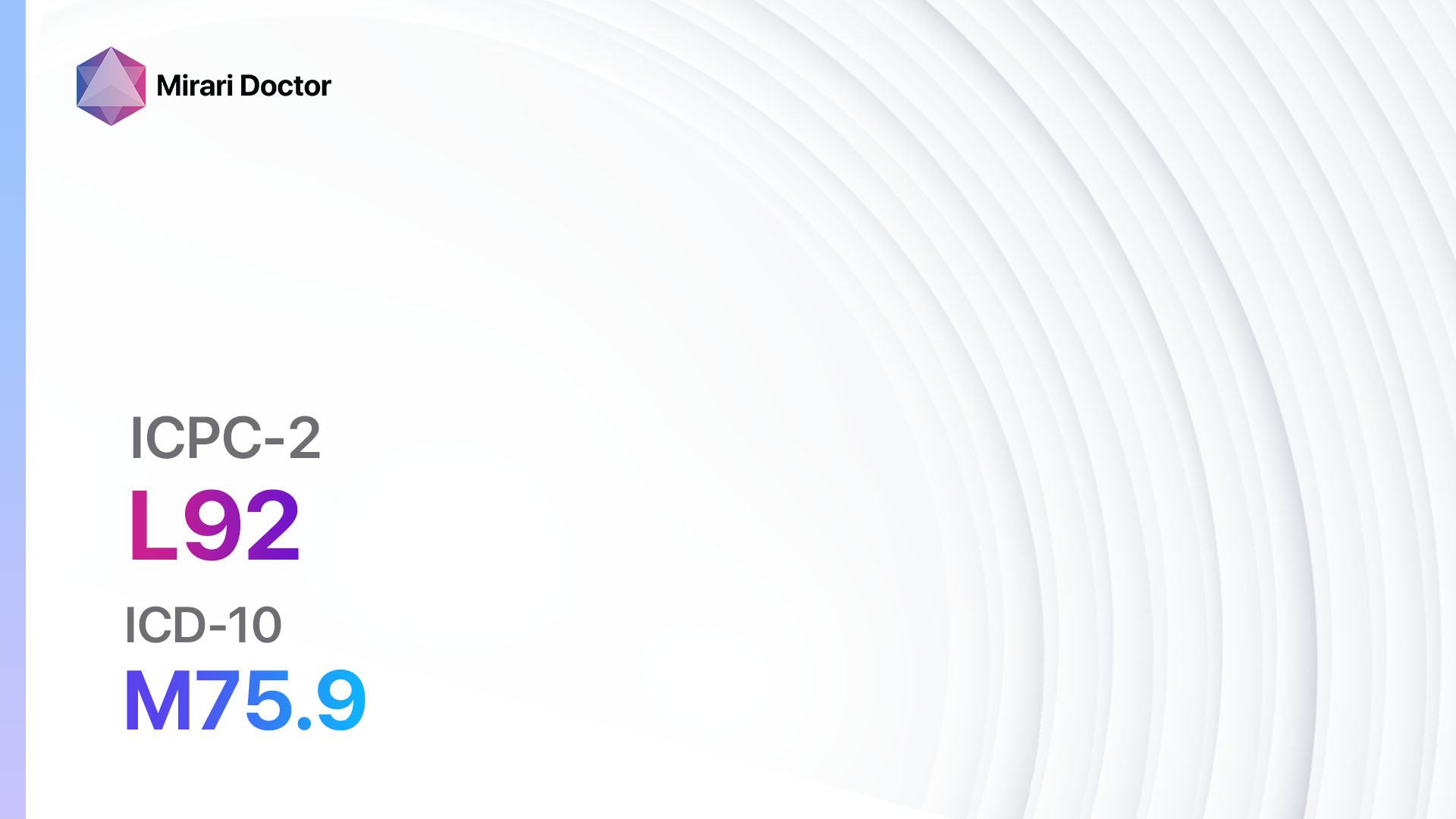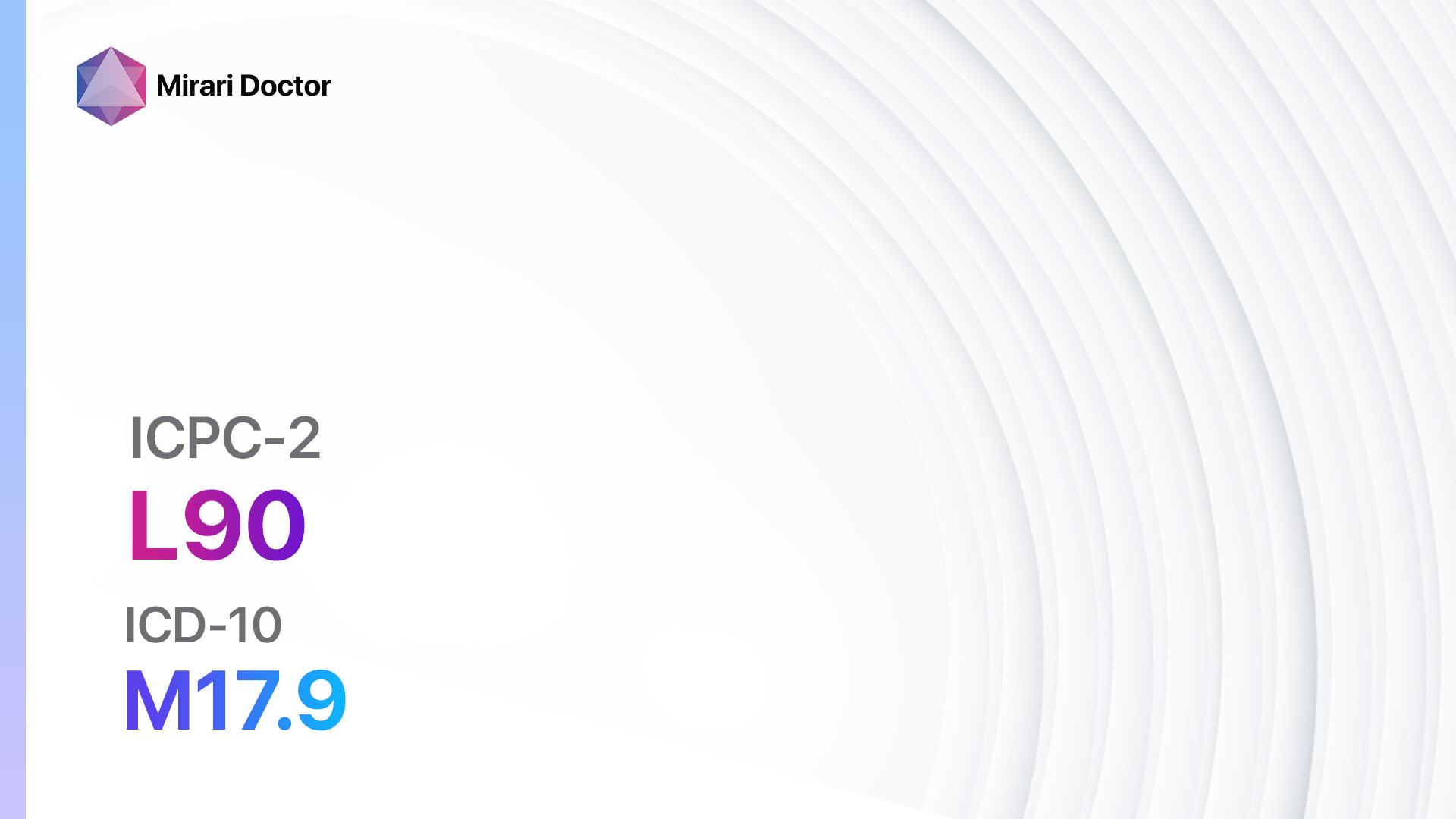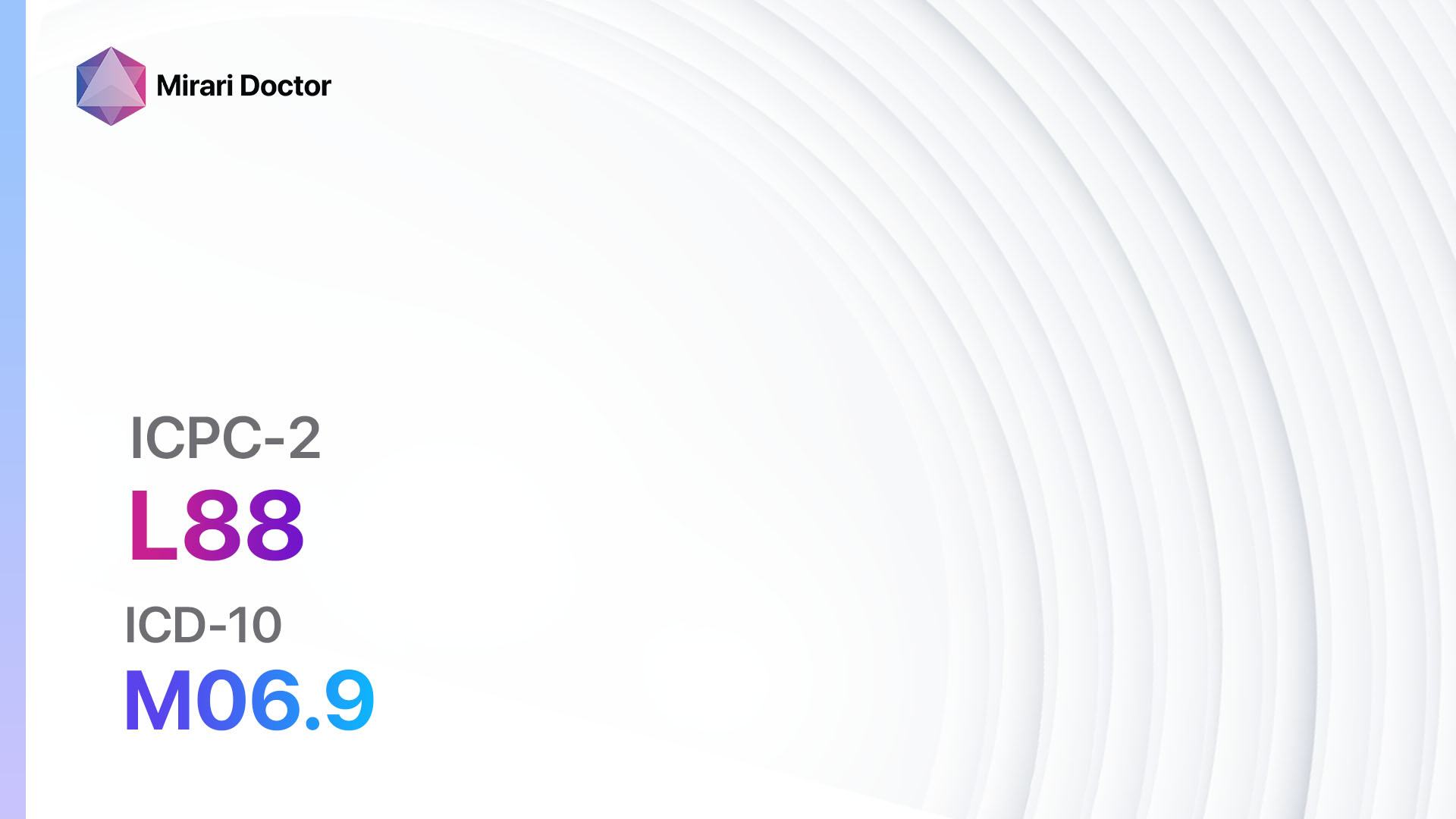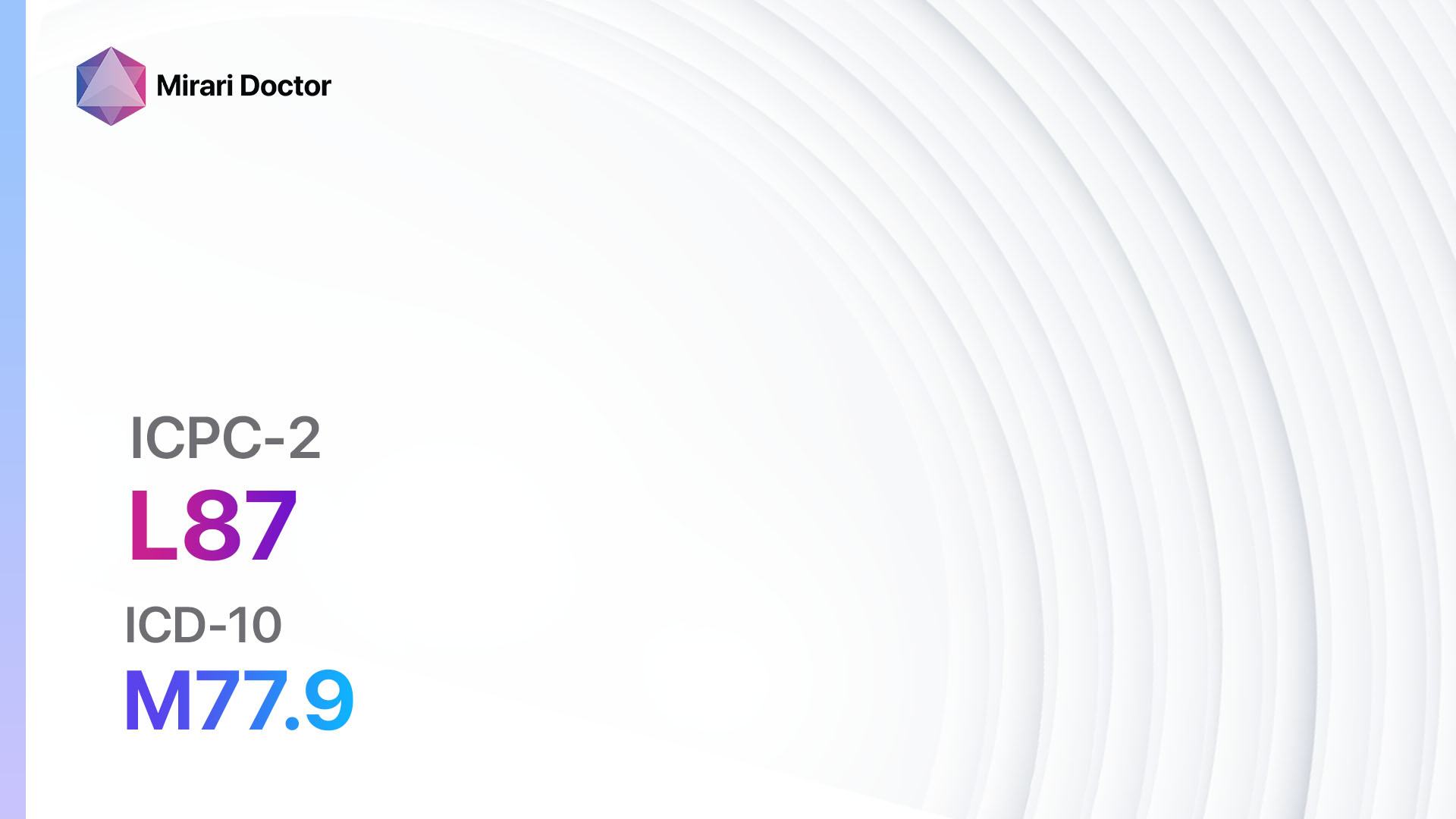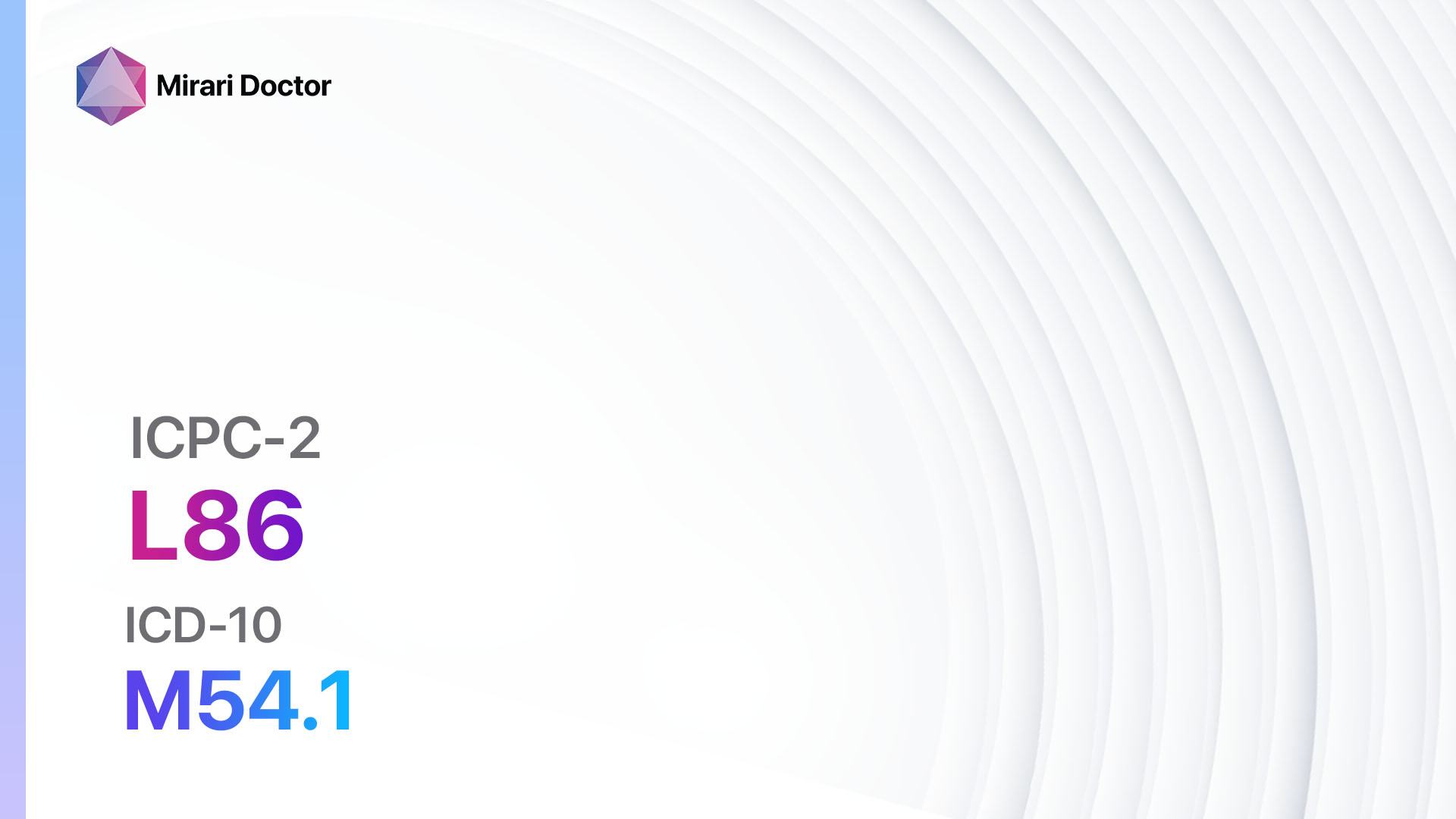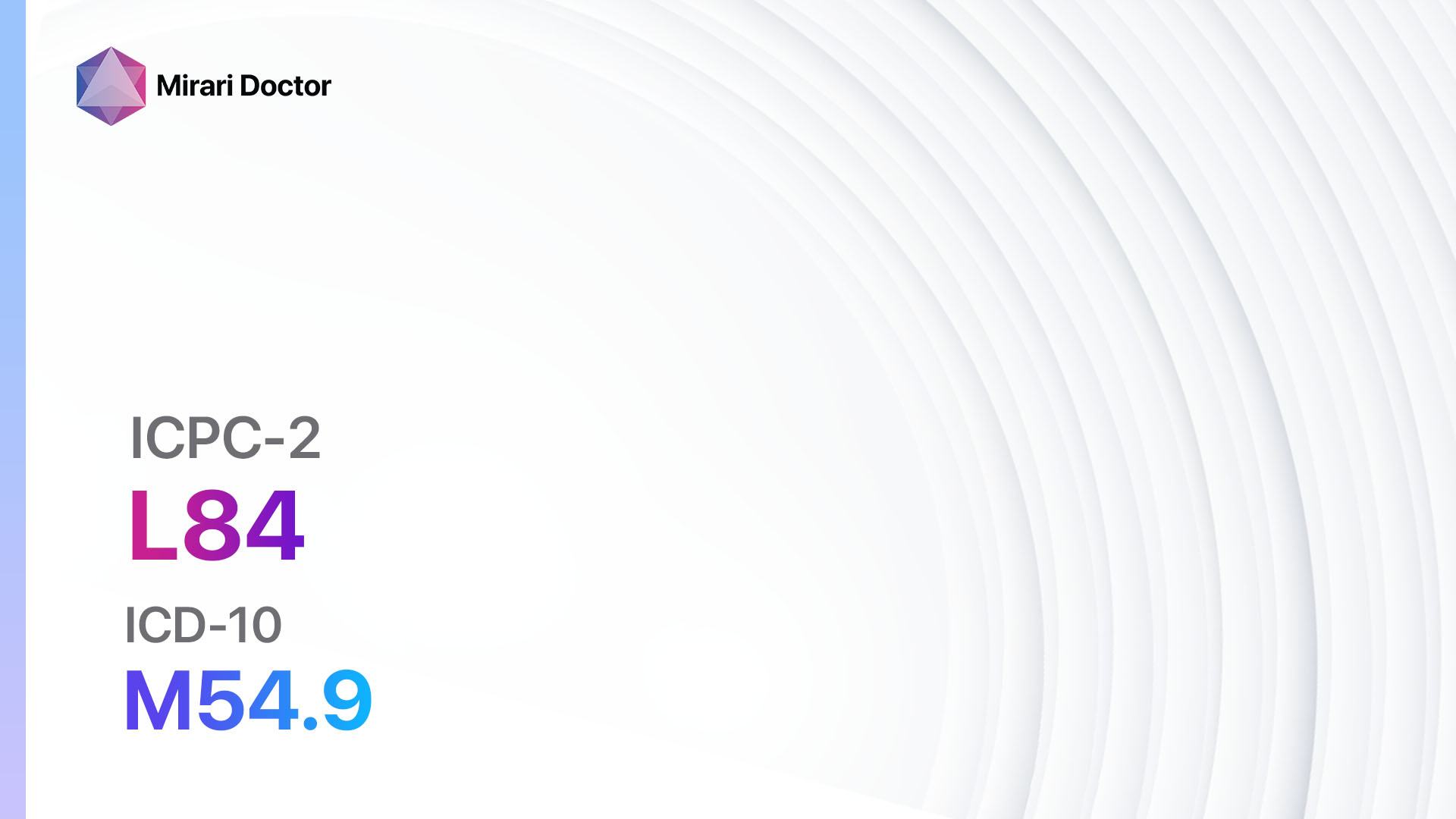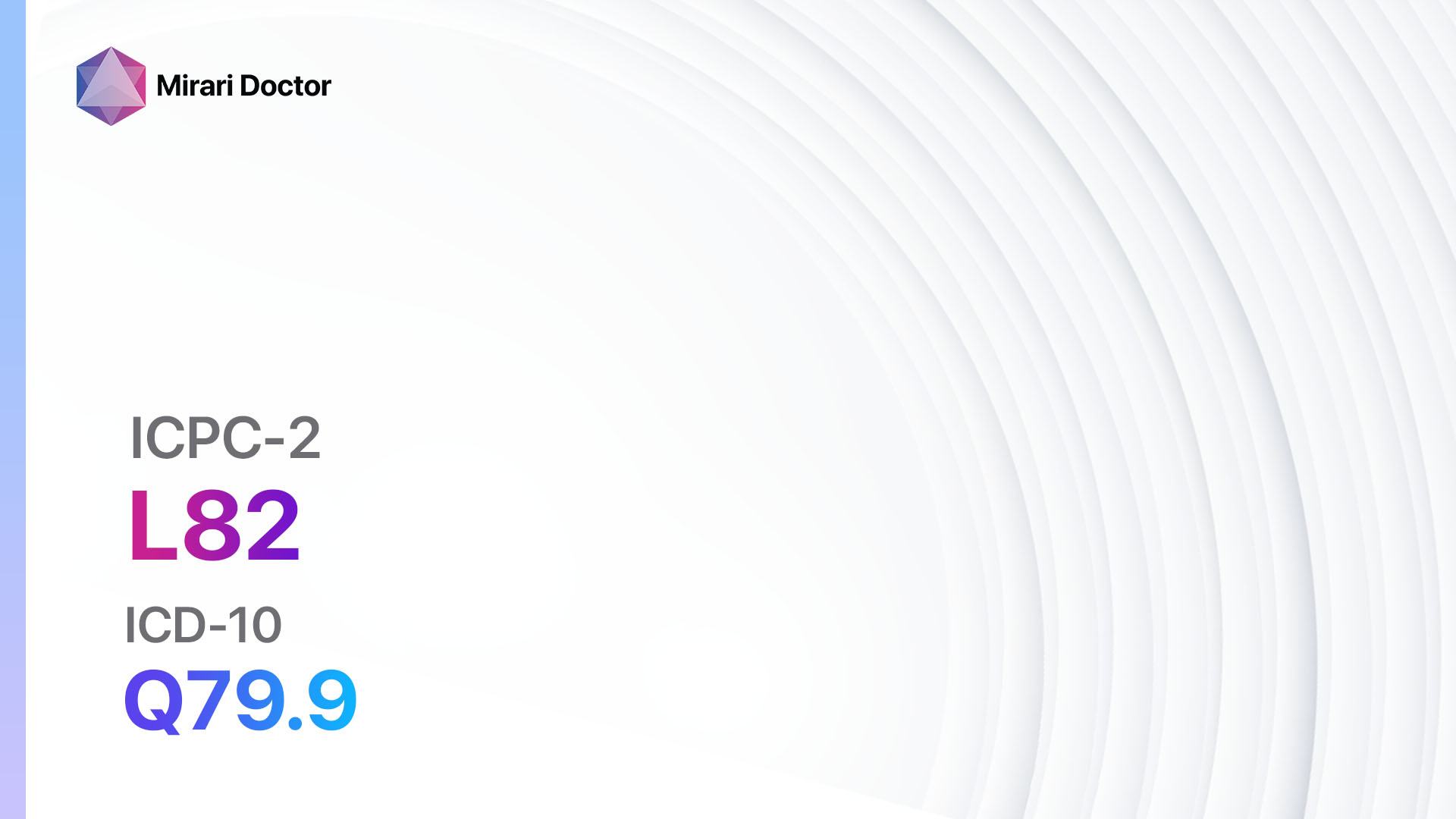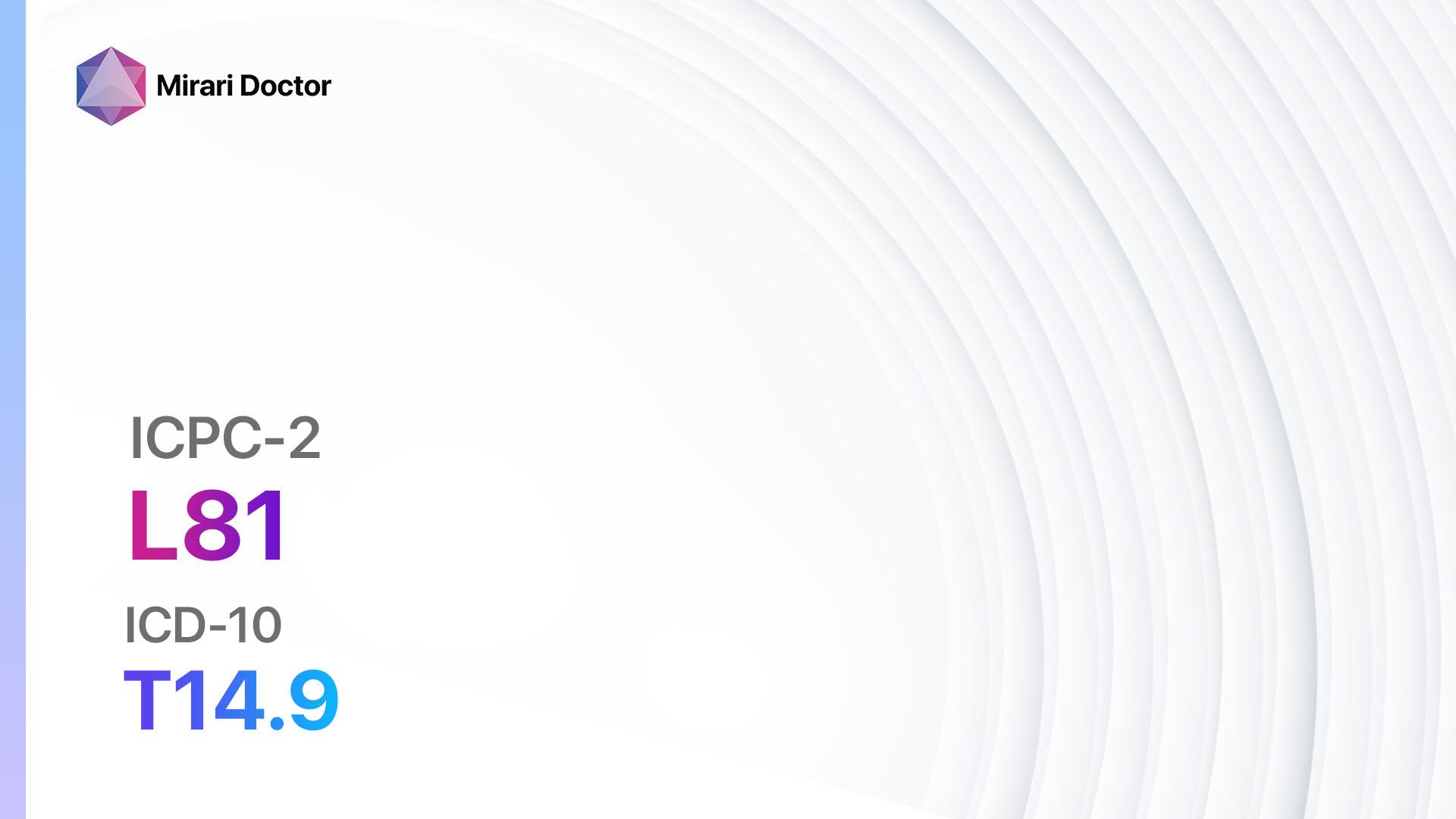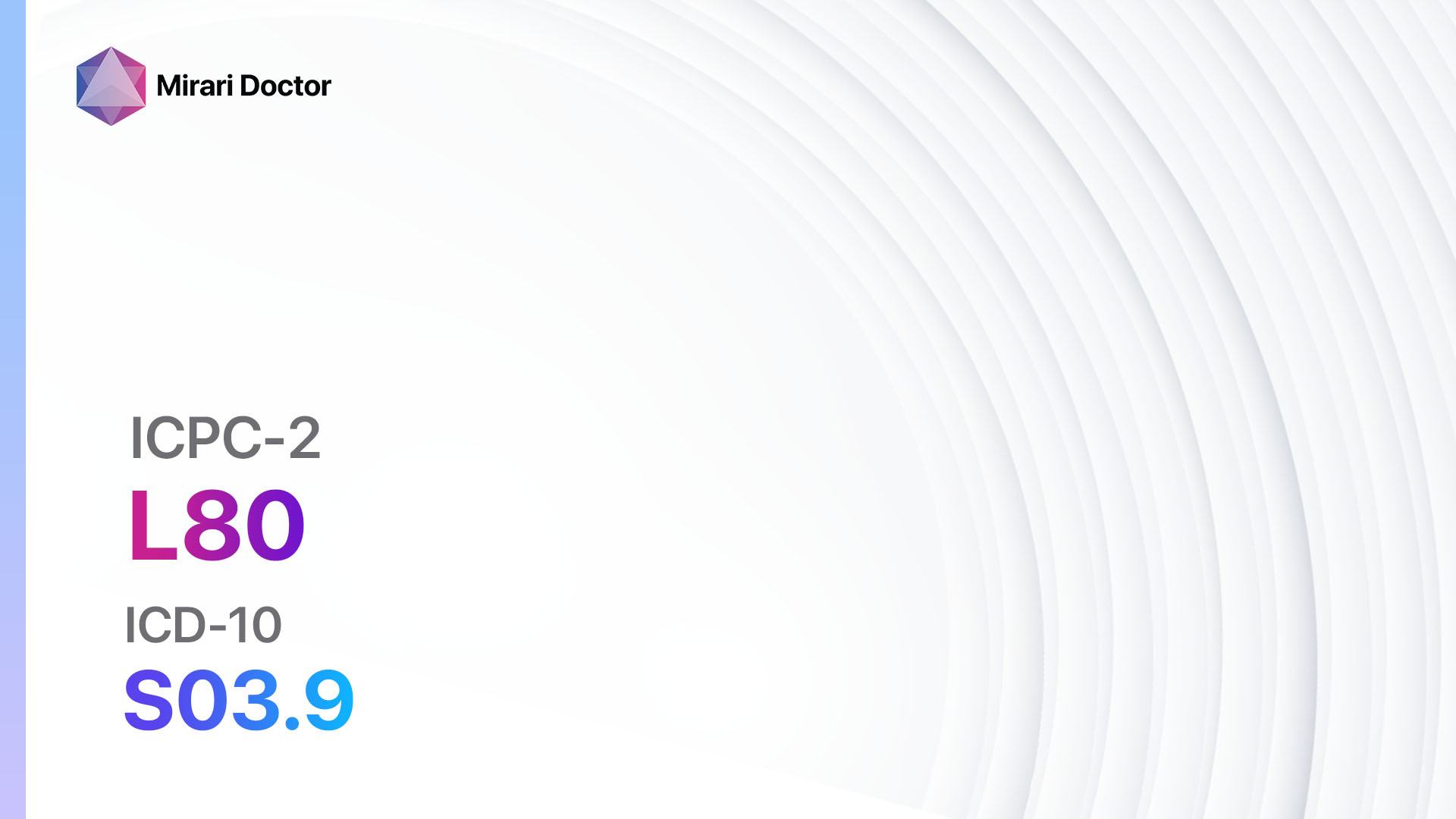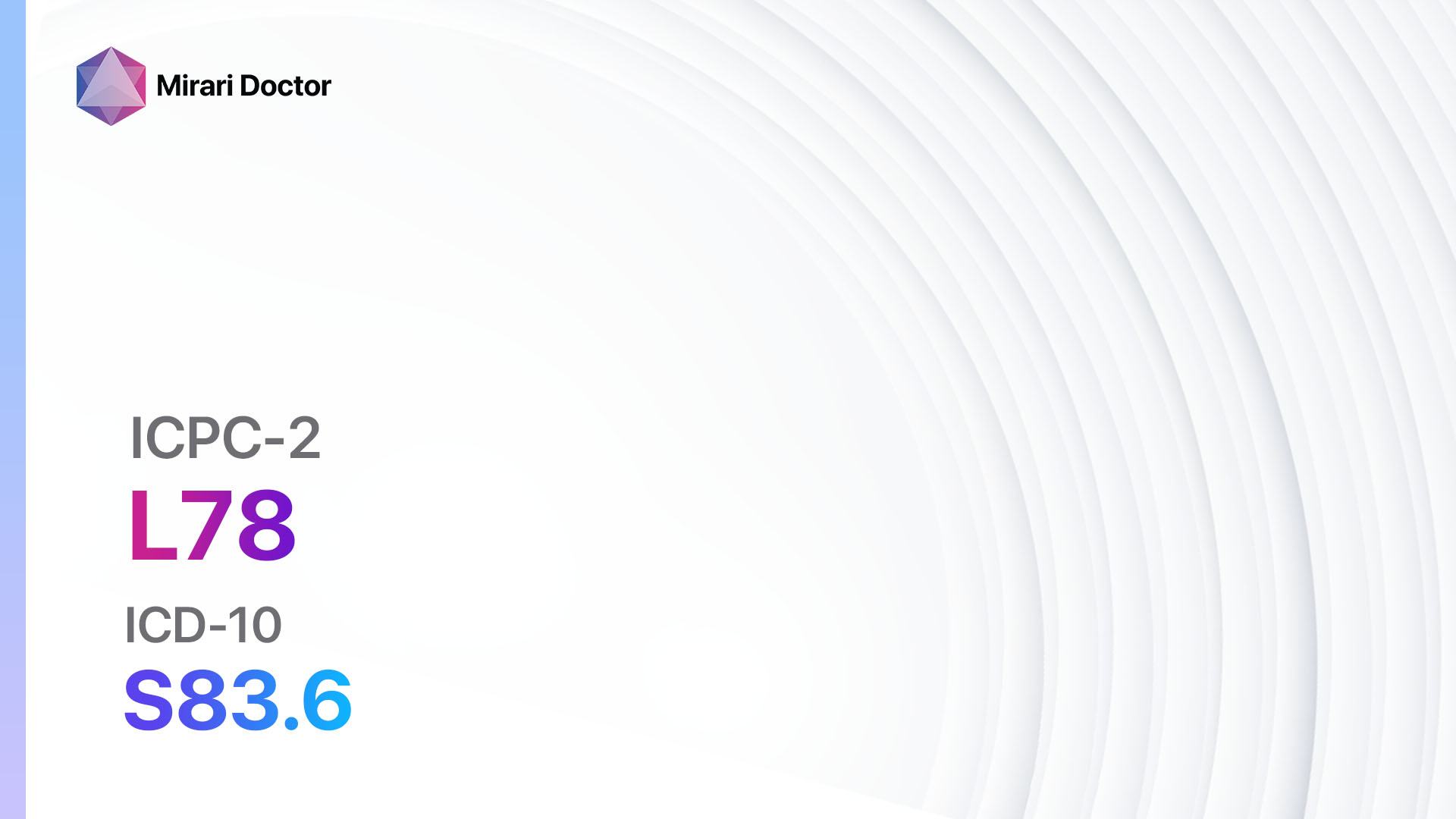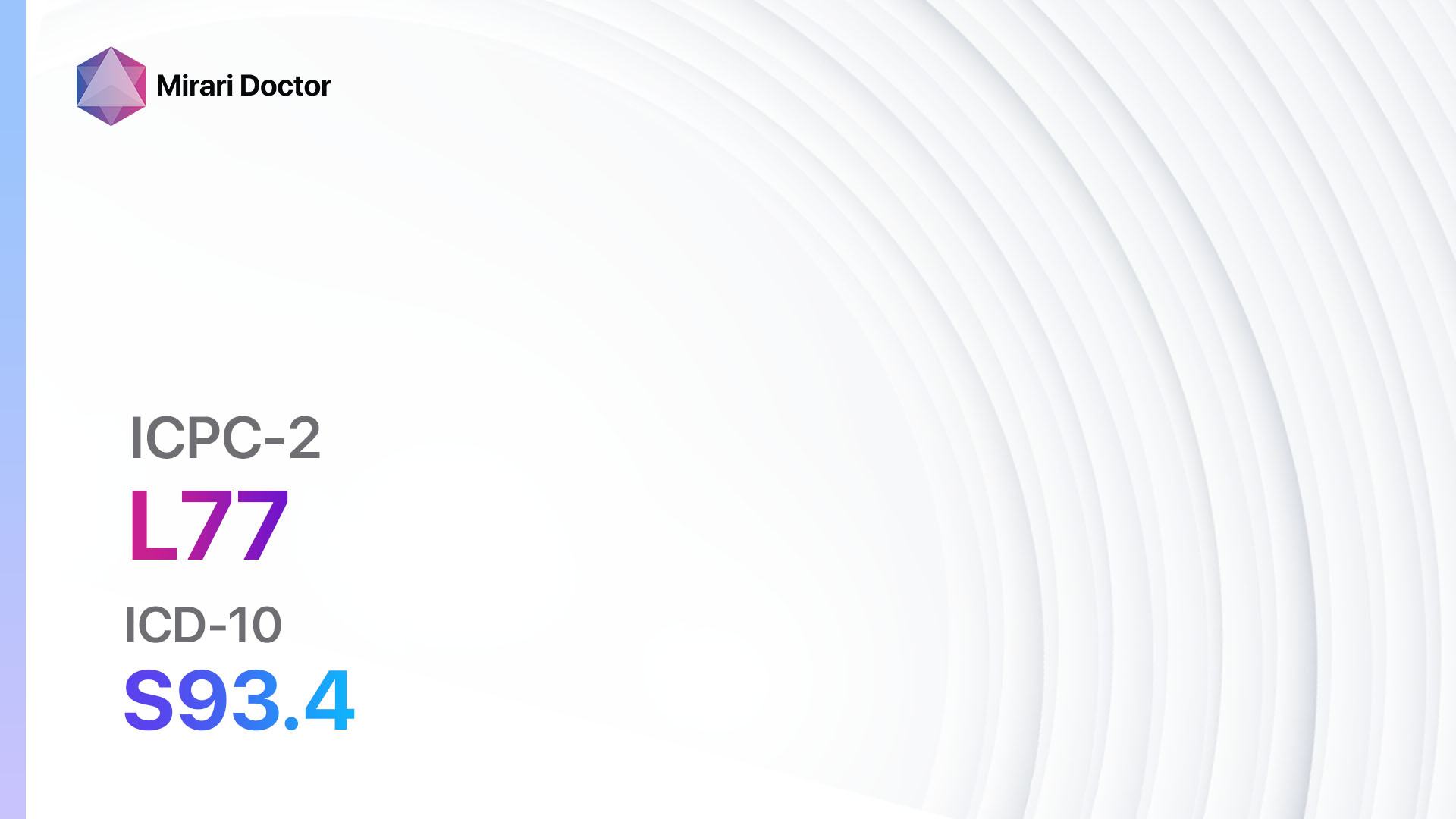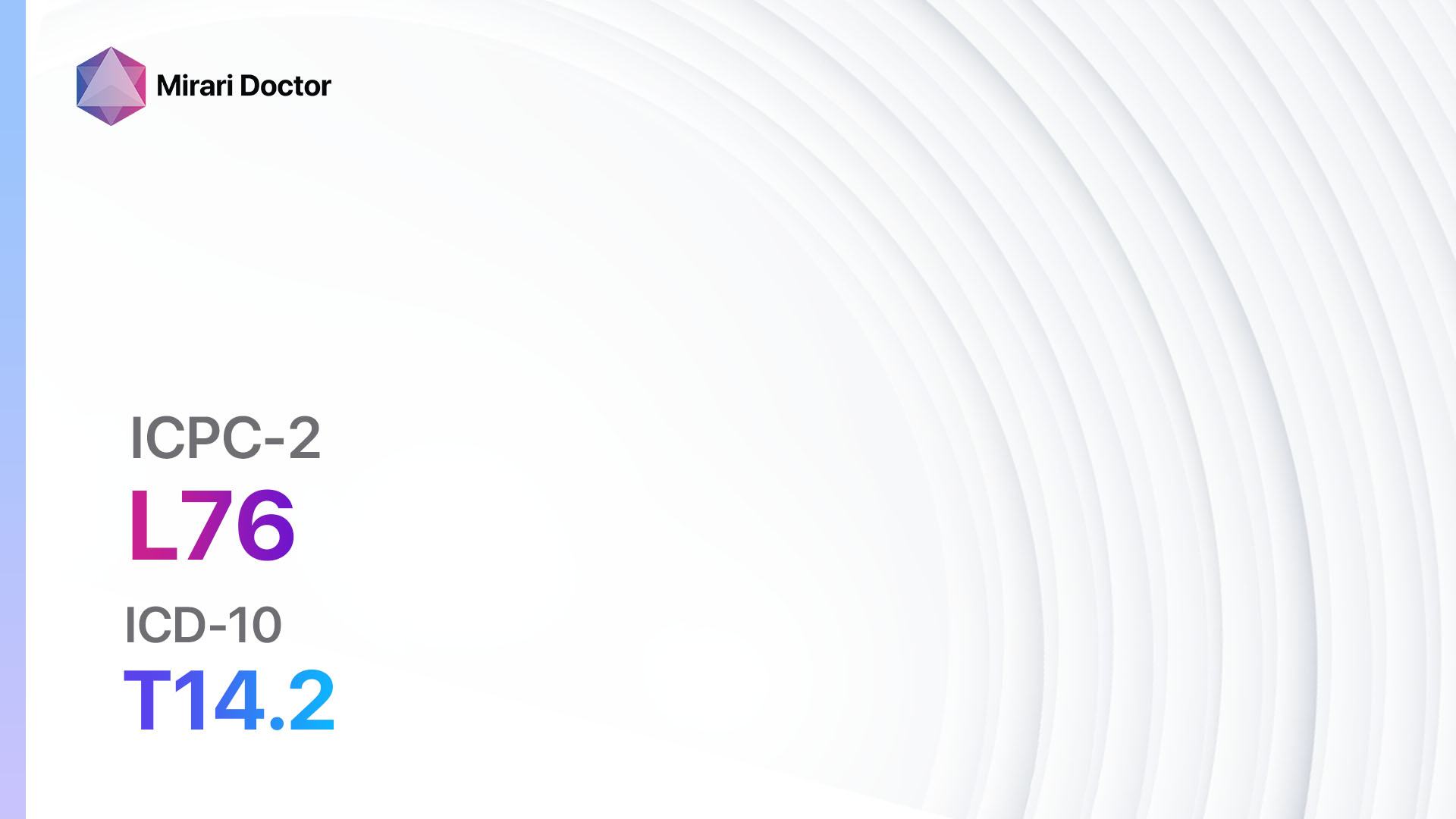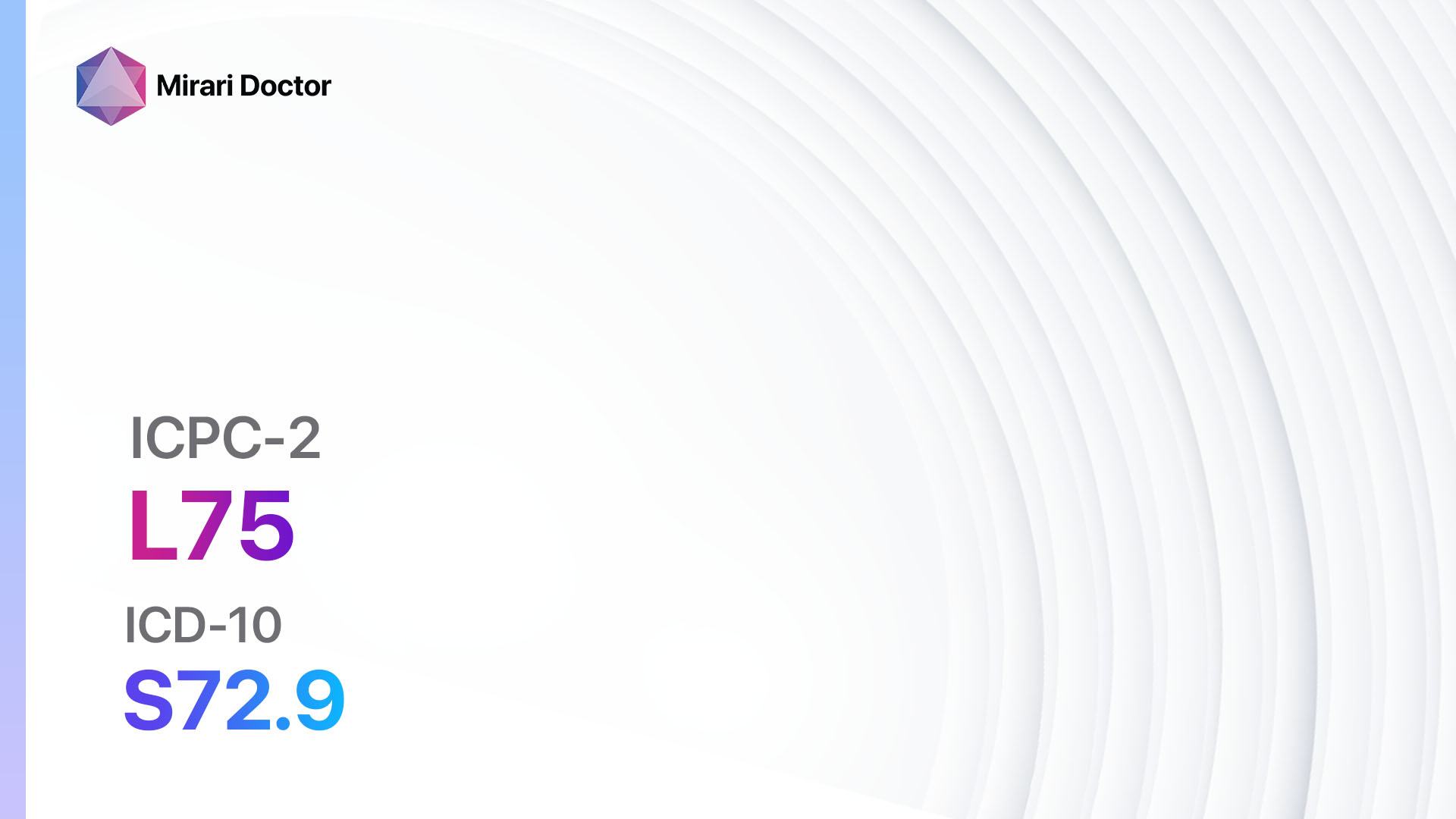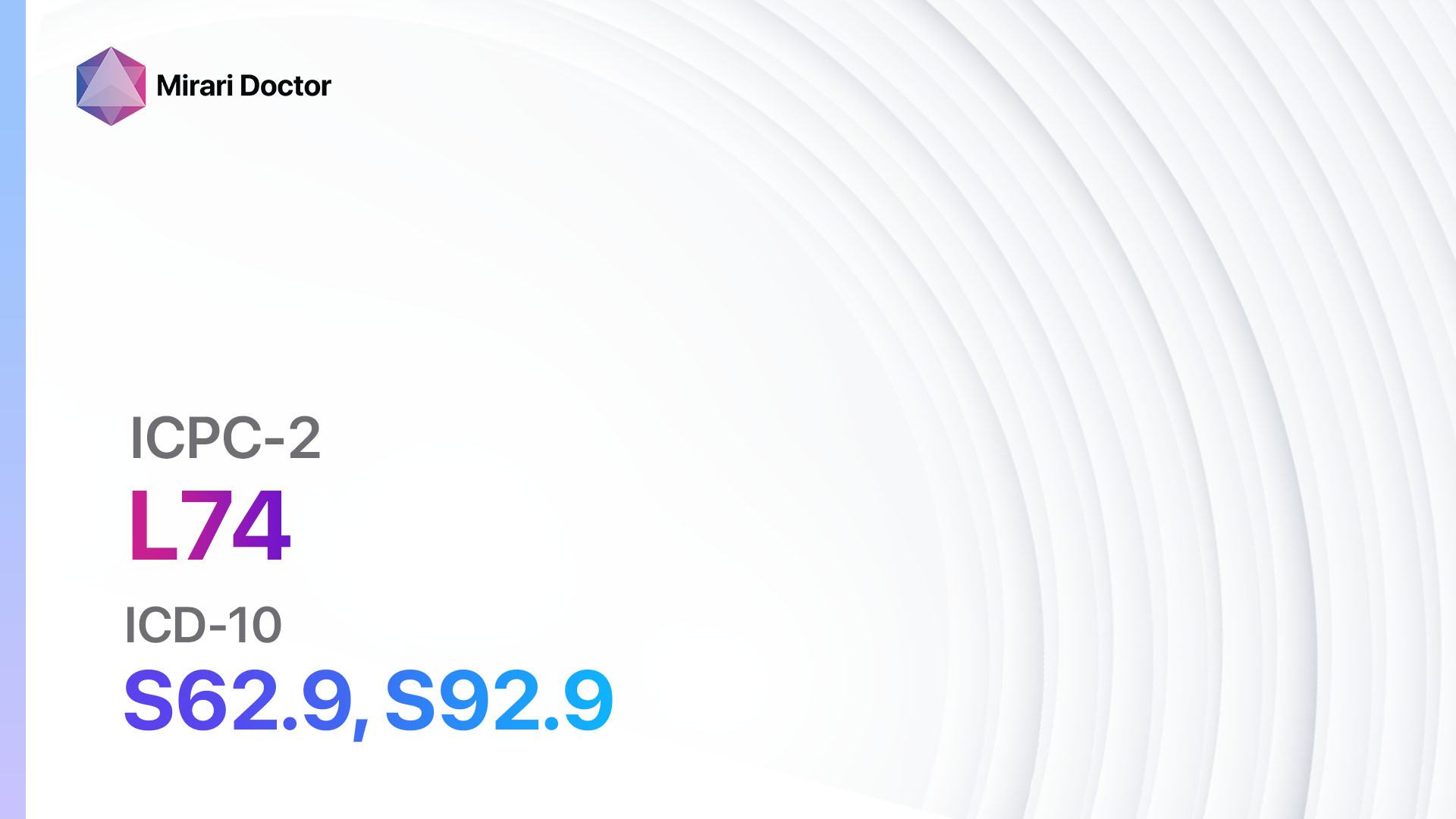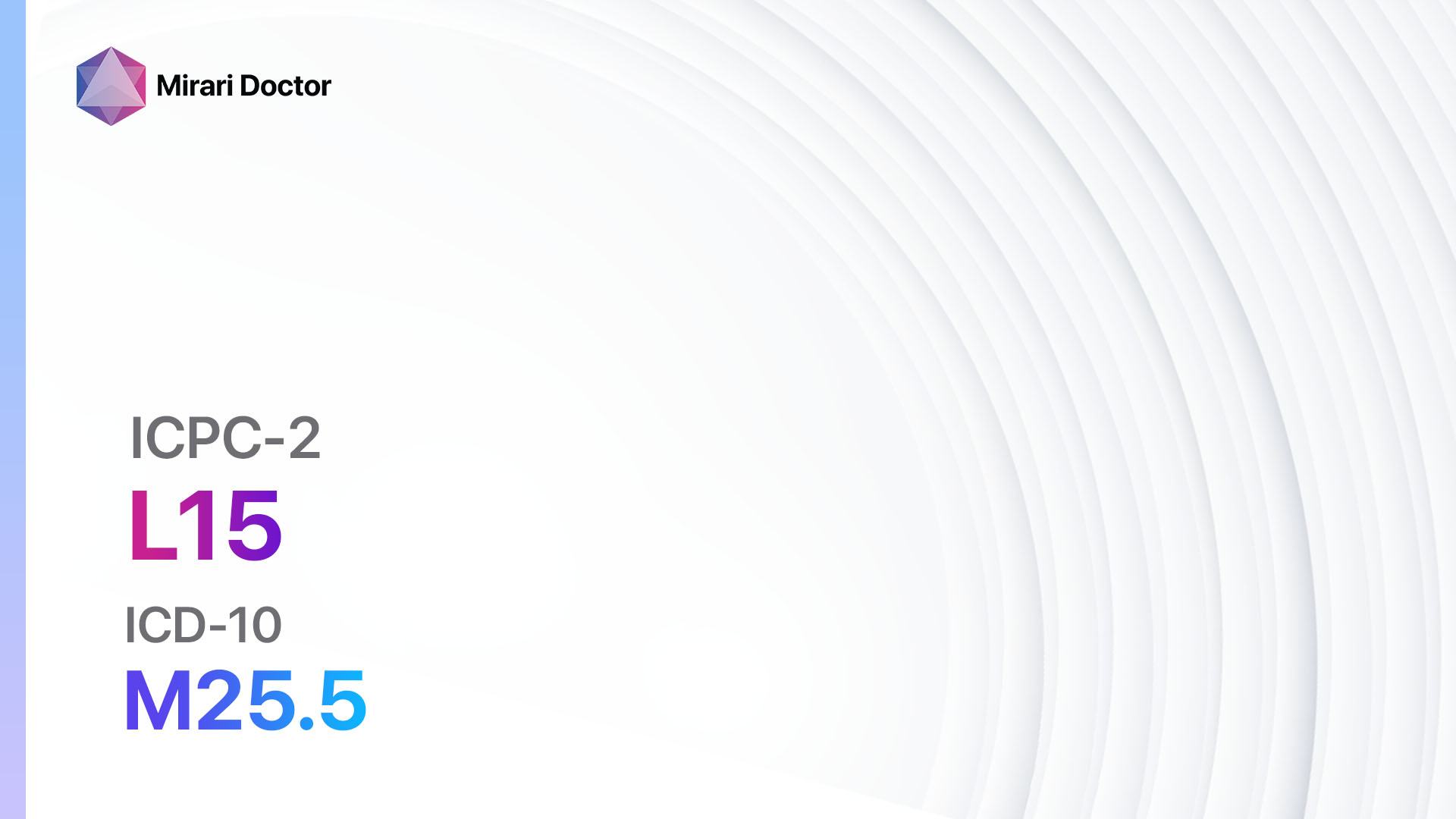
Introduction
Knee symptoms and complaints are common and can be caused by various factors such as injury, overuse, or underlying medical conditions[1][2]. This guide aims to provide a comprehensive overview of the diagnostic steps, possible interventions, and lifestyle modifications for knee symptoms and complaints.
Codes
Symptoms
- Pain in the knee joint[5]
- Swelling or inflammation[6]
- Stiffness or limited range of motion[7]
- Clicking or popping sounds[8]
- Instability or feeling of giving way[9]
Causes
- Osteoarthritis: Degenerative joint disease that causes the breakdown of cartilage in the knee joint[10].
- Rheumatoid arthritis: Autoimmune disease that causes inflammation and damage to the joints, including the knee.
- Ligament injuries: Tears or sprains in the ligaments of the knee, such as the anterior cruciate ligament (ACL) or medial collateral ligament (MCL).
- Meniscus tears: Tears in the rubbery cushions (menisci) that provide cushioning and stability to the knee joint.
- Patellofemoral pain syndrome: Pain around the kneecap due to overuse or misalignment.
- Bursitis: Inflammation of the fluid-filled sacs (bursae) that cushion the knee joint.
- Tendonitis: Inflammation of the tendons that attach muscles to bones in the knee joint.
Diagnostic Steps
Medical History
- Gather information about the onset, duration, and severity of knee symptoms.
- Ask about any previous injuries or medical conditions that may contribute to the symptoms.
- Inquire about any activities or movements that worsen or alleviate the symptoms.
- Assess for any risk factors, such as obesity or repetitive stress on the knee joint.
Physical Examination
- Observe the knee for any visible signs of swelling, redness, or deformity.
- Palpate the knee joint to identify areas of tenderness or swelling.
- Assess the range of motion of the knee joint.
- Perform specific tests, such as the Lachman test or McMurray test, to evaluate for ligament or meniscus injuries.
Laboratory Tests
- Complete blood count (CBC): To rule out infection or systemic inflammatory conditions.
- Erythrocyte sedimentation rate (ESR) and C-reactive protein (CRP): Markers of inflammation that may be elevated in certain conditions, such as rheumatoid arthritis.
- Joint fluid analysis: Aspiration of fluid from the knee joint to assess for infection, crystals, or signs of inflammation.
Diagnostic Imaging
- X-rays: To evaluate the bones and joint spaces for signs of arthritis, fractures, or other abnormalities.
- Magnetic resonance imaging (MRI): Provides detailed images of the soft tissues, such as ligaments, tendons, and cartilage, to assess for tears or other injuries.
- Ultrasound: Can be used to visualize the structures of the knee joint, such as the tendons or bursae, and assess for inflammation or fluid accumulation.
- Computed tomography (CT) scan: May be used to provide more detailed images of the bones and joints, particularly in cases where fractures or complex injuries are suspected.
Other Tests
- Arthroscopy: A minimally invasive procedure in which a small camera is inserted into the knee joint to visualize and diagnose internal structures.
- Bone scan: A nuclear medicine test that can detect areas of increased bone activity, which may indicate infection or other conditions.
- Nerve conduction studies: If nerve involvement is suspected, these tests can assess the function and integrity of the nerves in the knee area.
Follow-up and Patient Education
- Provide the patient with a diagnosis and explain the underlying cause of their knee symptoms.
- Discuss treatment options, including both traditional and alternative interventions.
- Emphasize the importance of following recommended lifestyle modifications and adhering to any prescribed medications or therapies.
- Schedule follow-up appointments to monitor progress and adjust treatment as needed.
Possible Interventions
Traditional Interventions
Medications:
Top 5 drugs for knee symptoms/complaints:
- Nonsteroidal anti-inflammatory drugs (NSAIDs) (e.g., Ibuprofen, Naproxen):
- Cost: Generic versions can be $3-$20/month.
- Contraindications: History of gastrointestinal bleeding, kidney disease.
- Side effects: Upset stomach, increased risk of bleeding.
- Severe side effects: Stomach ulcers, kidney damage.
- Drug interactions: Blood thinners, certain blood pressure medications.
- Warning: Prolonged use may increase the risk of cardiovascular events.
- Acetaminophen:
- Cost: Generic versions can be $3-$10/month.
- Contraindications: Liver disease, alcoholism.
- Side effects: Rare at therapeutic doses.
- Severe side effects: Liver damage (with high doses or prolonged use).
- Drug interactions: None significant.
- Warning: Avoid exceeding the recommended daily dose.
- Corticosteroids (e.g., Prednisone, Methylprednisolone):
- Cost: Generic versions can be $4-$30/month.
- Contraindications: Active infections, uncontrolled diabetes.
- Side effects: Increased appetite, weight gain, mood changes.
- Severe side effects: Osteoporosis, adrenal suppression.
- Drug interactions: NSAIDs, certain antibiotics.
- Warning: Prolonged use may require tapering to avoid adrenal insufficiency.
- Hyaluronic acid injections (e.g., Synvisc, Orthovisc):
- Cost: $500-$1000 per injection.
- Contraindications: Active joint infection, skin infections.
- Side effects: Temporary pain or swelling at the injection site.
- Severe side effects: Allergic reactions, joint infections.
- Drug interactions: None significant.
- Warning: Multiple injections may be required for optimal effect.
- Muscle relaxants (e.g., Cyclobenzaprine, Methocarbamol):
- Cost: Generic versions can be $4-$30/month.
- Contraindications: Glaucoma, urinary retention.
- Side effects: Drowsiness, dry mouth.
- Severe side effects: Rare, but may include allergic reactions.
- Drug interactions: Sedatives, certain antidepressants.
- Warning: Avoid driving or operating heavy machinery while taking these medications.
Alternative Drugs:
- Capsaicin cream: Topical cream that can help relieve pain and inflammation. Cost: $10-$20 per tube.
- Glucosamine and chondroitin: Dietary supplements that may help reduce joint pain and improve mobility. Cost: $20-$40 per month.
- Topical NSAIDs: Creams or gels that can provide localized pain relief. Cost: $10-$30 per tube.
Surgical Procedures:
- Arthroscopy: Minimally invasive procedure to repair or remove damaged structures in the knee joint. Cost: $5,000-$10,000.
- Total knee replacement: Surgical procedure to replace the damaged knee joint with an artificial joint. Cost: $20,000-$50,000.
Alternative Interventions
- Physical therapy: Exercises and manual techniques to improve strength, flexibility, and function of the knee joint. Cost: $50-$150 per session.
- Bracing or orthotics: Devices that provide support and stability to the knee joint. Cost: $50-$500, depending on the type and complexity of the device.
- Acupuncture: May help reduce pain and improve function. Cost: $60-$120 per session.
- Massage therapy: Can help relieve muscle tension and improve circulation. Cost: $60-$120 per session.
- Herbal supplements: Some herbs, such as turmeric or ginger, may have anti-inflammatory properties. Cost: Varies depending on the specific supplement.
Lifestyle Interventions
- Weight management: Losing excess weight can reduce stress on the knee joint. Cost: Varies depending on the chosen weight loss method.
- Low-impact exercise: Engaging in activities like swimming or cycling can help improve knee function without excessive strain. Cost: Varies depending on the chosen activity.
- Physical activity modification: Avoiding activities that exacerbate knee symptoms, such as running or jumping. Cost: None.
- Heat or cold therapy: Applying heat or cold packs to the knee can help reduce pain and inflammation. Cost: $10-$30 for reusable packs.
- Assistive devices: Using a cane or walker can provide support and reduce pressure on the knee joint. Cost: Varies depending on the chosen device.
It is important to note that the cost ranges provided are approximate and may vary depending on the location and availability of the interventions.
Mirari Cold Plasma Alternative Intervention
Understanding Mirari Cold Plasma
- Safe and Non-Invasive Treatment: Mirari Cold Plasma is a safe and non-invasive treatment option for various skin conditions. It does not require incisions, minimizing the risk of scarring, bleeding, or tissue damage.
- Efficient Extraction of Foreign Bodies: Mirari Cold Plasma facilitates the removal of foreign bodies from the skin by degrading and dissociating organic matter, allowing easier access and extraction.
- Pain Reduction and Comfort: Mirari Cold Plasma has a local analgesic effect, providing pain relief during the treatment, making it more comfortable for the patient.
- Reduced Risk of Infection: Mirari Cold Plasma has antimicrobial properties, effectively killing bacteria and reducing the risk of infection.
- Accelerated Healing and Minimal Scarring: Mirari Cold Plasma stimulates wound healing and tissue regeneration, reducing healing time and minimizing the formation of scars.
Mirari Cold Plasma Prescription
Video instructions for using Mirari Cold Plasma Device – L15 Knee symptom/complaint (ICD-10:M25.5)
| Mild | Moderate | Severe |
| Mode setting: 2 (Wound Healing) Location: 0 (Localized) Morning: 15 minutes, Evening: 15 minutes |
Mode setting: 2 (Wound Healing) Location: 0 (Localized) Morning: 30 minutes, Lunch: 30 minutes, Evening: 30 minutes |
Mode setting: 2 (Wound Healing) Location: 0 (Localized) Morning: 30 minutes, Lunch: 30 minutes, Evening: 30 minutes |
| Mode setting: 9 (Arthritis) Location: 0 (Localized) Morning: 15 minutes, Evening: 15 minutes |
Mode setting: 9 (Arthritis) Location: 0 (Localized) Morning: 30 minutes, Lunch: 30 minutes, Evening: 30 minutes |
Mode setting: 9 (Arthritis) Location: 0 (Localized) Morning: 30 minutes, Lunch: 30 minutes, Evening: 30 minutes |
| Mode setting: 7 (Immunotherapy) Location: 1 (Sacrum) Morning: 15 minutes, Evening: 15 minutes |
Mode setting: 7 (Immunotherapy) Location: 1 (Sacrum) Morning: 30 minutes, Lunch: 30 minutes, Evening: 30 minutes |
Mode setting: 7 (Immunotherapy) Location: 1 (Sacrum) Morning: 30 minutes, Lunch: 30 minutes, Evening: 30 minutes |
| Total Morning: 45 minutes approx. $7.50 USD, Evening: 45 minutes approx. $7.50 USD |
Total Morning: 90 minutes approx. $15 USD, Lunch: 90 minutes approx. $15 USD, Evening: 90 minutes approx. $15 USD, |
Total Morning: 90 minutes approx. $15 USD, Lunch: 90 minutes approx. $15 USD, Evening: 90 minutes approx. $15 USD, |
| Usual treatment for 7-60 days approx. $105 USD – $900 USD | Usual treatment for 6-8 weeks approx. $1,890 USD – $2,520 USD |
Usual treatment for 3-6 months approx. $4,050 USD – $8,100 USD
|
 |
|
Use the Mirari Cold Plasma device to treat Knee symptom/complaint effectively.
WARNING: MIRARI COLD PLASMA IS DESIGNED FOR THE HUMAN BODY WITHOUT ANY ARTIFICIAL OR THIRD PARTY PRODUCTS. USE OF OTHER PRODUCTS IN COMBINATION WITH MIRARI COLD PLASMA MAY CAUSE UNPREDICTABLE EFFECTS, HARM OR INJURY. PLEASE CONSULT A MEDICAL PROFESSIONAL BEFORE COMBINING ANY OTHER PRODUCTS WITH USE OF MIRARI.
Step 1: Cleanse the Skin
- Start by cleaning the affected area of the skin with a gentle cleanser or mild soap and water. Gently pat the area dry with a clean towel.
Step 2: Prepare the Mirari Cold Plasma device
- Ensure that the Mirari Cold Plasma device is fully charged or has fresh batteries as per the manufacturer’s instructions. Make sure the device is clean and in good working condition.
- Switch on the Mirari device using the power button or by following the specific instructions provided with the device.
- Some Mirari devices may have adjustable settings for intensity or treatment duration. Follow the manufacturer’s instructions to select the appropriate settings based on your needs and the recommended guidelines.
Step 3: Apply the Device
- Place the Mirari device in direct contact with the affected area of the skin. Gently glide or hold the device over the skin surface, ensuring even coverage of the area experiencing.
- Slowly move the Mirari device in a circular motion or follow a specific pattern as indicated in the user manual. This helps ensure thorough treatment coverage.
Step 4: Monitor and Assess:
- Keep track of your progress and evaluate the effectiveness of the Mirari device in managing your Knee symptom/complaint. If you have any concerns or notice any adverse reactions, consult with your health care professional.
Note
This guide is for informational purposes only and should not replace the advice of a medical professional. Always consult with your healthcare provider or a qualified medical professional for personal advice, diagnosis, or treatment. Do not solely rely on the information presented here for decisions about your health. Use of this information is at your own risk. The authors of this guide, nor any associated entities or platforms, are not responsible for any potential adverse effects or outcomes based on the content.
Mirari Cold Plasma System Disclaimer
- Purpose: The Mirari Cold Plasma System is a Class 2 medical device designed for use by trained healthcare professionals. It is registered for use in Thailand and Vietnam. It is not intended for use outside of these locations.
- Informational Use: The content and information provided with the device are for educational and informational purposes only. They are not a substitute for professional medical advice or care.
- Variable Outcomes: While the device is approved for specific uses, individual outcomes can differ. We do not assert or guarantee specific medical outcomes.
- Consultation: Prior to utilizing the device or making decisions based on its content, it is essential to consult with a Certified Mirari Tele-Therapist and your medical healthcare provider regarding specific protocols.
- Liability: By using this device, users are acknowledging and accepting all potential risks. Neither the manufacturer nor the distributor will be held accountable for any adverse reactions, injuries, or damages stemming from its use.
- Geographical Availability: This device has received approval for designated purposes by the Thai and Vietnam FDA. As of now, outside of Thailand and Vietnam, the Mirari Cold Plasma System is not available for purchase or use.
References
- Connelly, A. E., Katz, J. N., & Losina, E. (2016). Knee pain: Epidemiology, pathophysiology, and treatment. Current Opinion in Rheumatology, 28(2), 112-118.
- Nguyen, U. S., Zhang, Y., Zhu, Y., Niu, J., Zhang, B., & Felson, D. T. (2011). Increasing prevalence of knee pain and symptomatic knee osteoarthritis: Survey and cohort data. Annals of Internal Medicine, 155(11), 725-732.
- RxReasoner. (n.d.). ICPC-2 Code: L15 Knee symptom/complaint. Retrieved from https://www.rxreasoner.com/icpc2codes/L15
- gesund.bund.de. (n.d.). M25.5 Pain in joint – ICD-10 code. Retrieved from https://gesund.bund.de/en/icd-code-search/m25-5
- Mayo Clinic. (2023, January 25). Knee pain – Symptoms and causes. Retrieved from https://www.mayoclinic.org/diseases-conditions/knee-pain/symptoms-causes/syc-20350849
- MedicalNewsToday. (2020, March 24). Knee pain: 14 home remedies. Retrieved from https://www.medicalnewstoday.com/articles/311280
- WebMD. (n.d.). Knee Pain: Causes, Treatments, Prevention. Retrieved from https://www.webmd.com/pain-management/knee-pain/knee-pain-overview
- The Stone Clinic. (n.d.). Knee Pain Diagnosis Symptom Checker. Retrieved from https://www.stoneclinic.com/knee-self-diagnosis
- Physiotattva. (n.d.). Knee Pain Diagnosis Chart- A Comprehensive Guide. Retrieved from https://www.physiotattva.com/blog/explore-knee-pain-diagnosis-chart
- Aster DM Healthcare. (n.d.). Navigating the World of Knee Pain: A Comprehensive Guide to Causes, Diagnosis, and Effective Treatment. Retrieved from https://www.asterdmhealthcare.com/health-library/navigating-the-world-of-knee-pain-a-comprehensive-guide-to-causes-diagnosis-and-effective-treatment
Related articles
Made in USA



